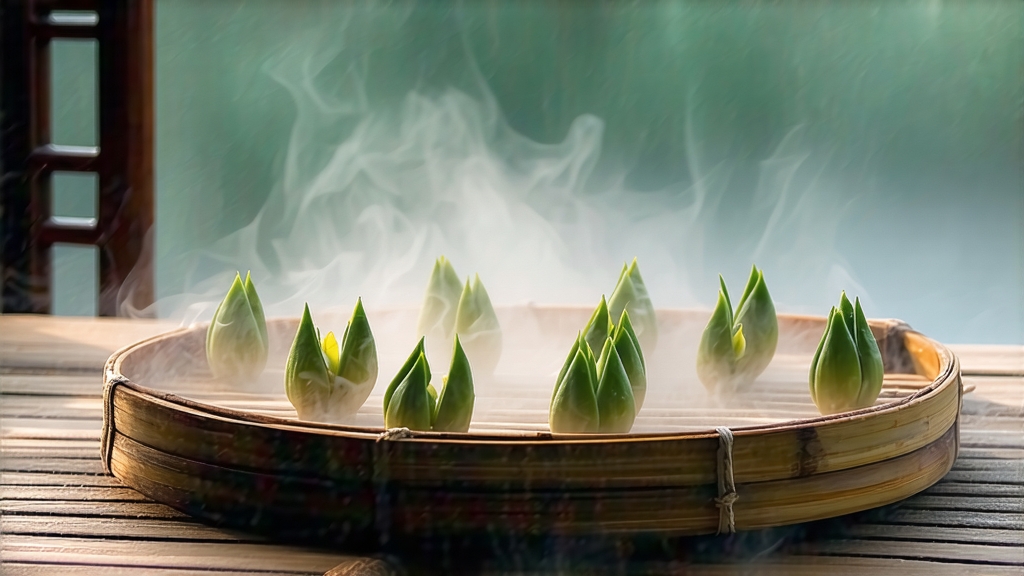
Tucked between the mist-laden hills of Dongting Mountain and the gentle ripples of Lake Taihu in Jiangsu Province, Biluochun—literally “Green Snail Spring”—has for three centuries been celebrated by Chinese poets, emperors, and everyday tea lovers as the epitome of delicate green tea. Its tiny, spiral-shaped leaves, downy silver tips, and intoxicating bouquet of orchid, apricot kernel, and fresh pea shoots make it one of the most coveted of China’s “Ten Famous Teas.” Yet beyond its charming appearance lies a story of micro-climates, imperial chance encounters, and a craft so precise that a single kilogram demands between sixty and eighty thousand hand-plucked shoots.
Historical whispers place Biluochun’s birth during the late Ming dynasty, when tea growers in the Dongting Dongshan and Xishan peninsulas noticed that wild tea bushes growing among peach, plum, and loquat trees produced leaves of uncanny fragrance. Local lore claims that a passing emperor, disguised as a commoner, sipped the infusion and asked its name; told it was “Xia Sha Ren Xiang” (“scary fragrance”) because its aroma was almost too intense, he rechristened it “Bi Luo Chun” for its jade color, snail-like curl, and spring harvest. Whatever the truth, by the early Qing the tea had become a palace tribute, and imperial demand locked in the exacting standards still observed today: only the top bud and the immediately adjacent leaf, picked before the Qingming festival when mountain mist is thickest and temperatures hover just below 20 °C.
The cultivar universe of Biluochun is small but nuanced. The original “Xiao Ye” (“small-leaf”) landrace, Camellia sinensis var. sinensis cv. Dongting, remains the most prized for its high amino acid ratio and natural floral notes. In the 1980s researchers released “Dongting #7,” a clonal selection that keeps the classic flavor yet withstands cooler springs, allowing harvests to stretch into early April. A third variant, “Dongting #8,” trades a touch of top-note delicacy for higher yield and brighter liquor, and is often used for organic plantations on the lake’s outer slopes. Regardless of cultivar, true Biluochun must be grown within the 12-km² core zone where the water body moderates temperature, reflects UV, and perfumes the air with blossom volatiles that the tea leaf quietly absorbs.
Plucking begins in darkness. Pickers climb the terraces at 4:30 a.m., headlamps glowing like fireflies, so that buds remain cool and un-wilted. By 7 a.m. the baskets are rushed to the village alleyways where the “qing guo” (kill-green) woks await, heated to exactly 180 °C by bundles of local bamboo. Here the master “cha shi” tosses 250 g of leaves with bare hands, a motion called “tui la mo,” part push, part pull, part gentle press. Within three minutes enzyme activity must be halted yet leaf cells must stay intact to preserve the downy hairs. The temperature is then dropped to 70 °C for the first “cuo tuan”—spiral rubbing—performed on a wicker tray shaped like an inverted snail shell. Growers say they are “teaching the leaf to remember its future shape,” and indeed the shoots begin to curl like miniature jade snails. A second, cooler rubbing at 50 °C sets the curl, while a final 40 °C “hong pei” (light bake) for twenty minutes lowers moisture to 5 %. No rolling machines, no hot-air tunnels; only muscle memory passed from mother to daughter, each wrist flick calibrated to the day’s humidity.
To brew Biluochun abroad, begin with transparency: a 250 ml tulip-shaped glass so the unfolding choreography can be admired. Use 3 g of leaf—roughly one level teaspoon—for every 200 ml of water. The critical parameter is temperature: 75 °C, never hotter, lest the amino acids collapse into flat grassiness. First warm the glass, then pour the water to one-third height before letting the leaves drift down like green snow. Top up after thirty seconds when the buds begin to sink. The inaugural infusion, lasting forty-five seconds, releases a pale celadon liquor with a shimmering ring of downy “tea cream” on the surface. Inh